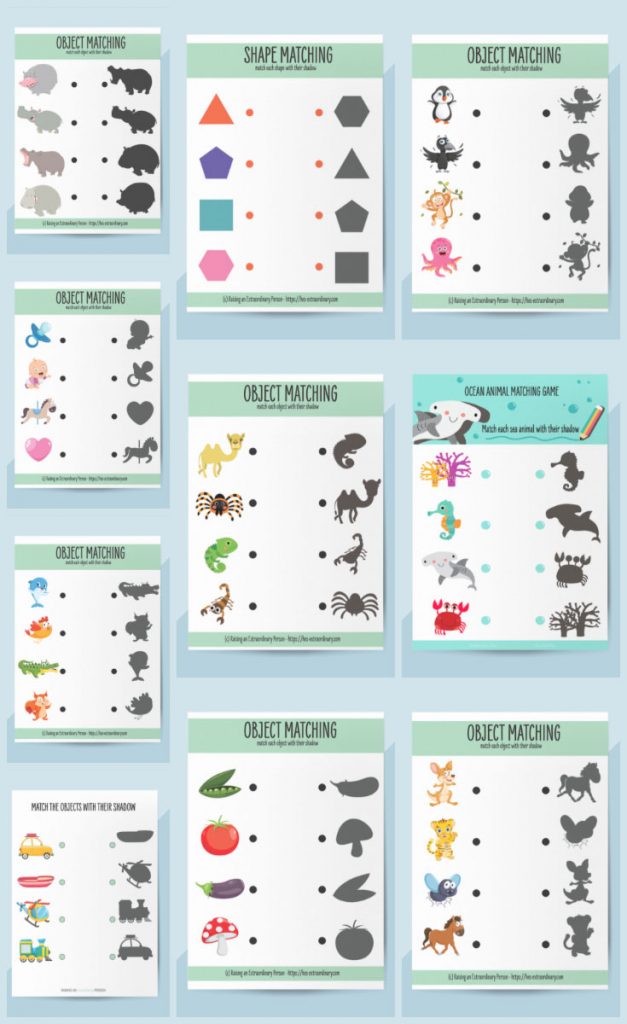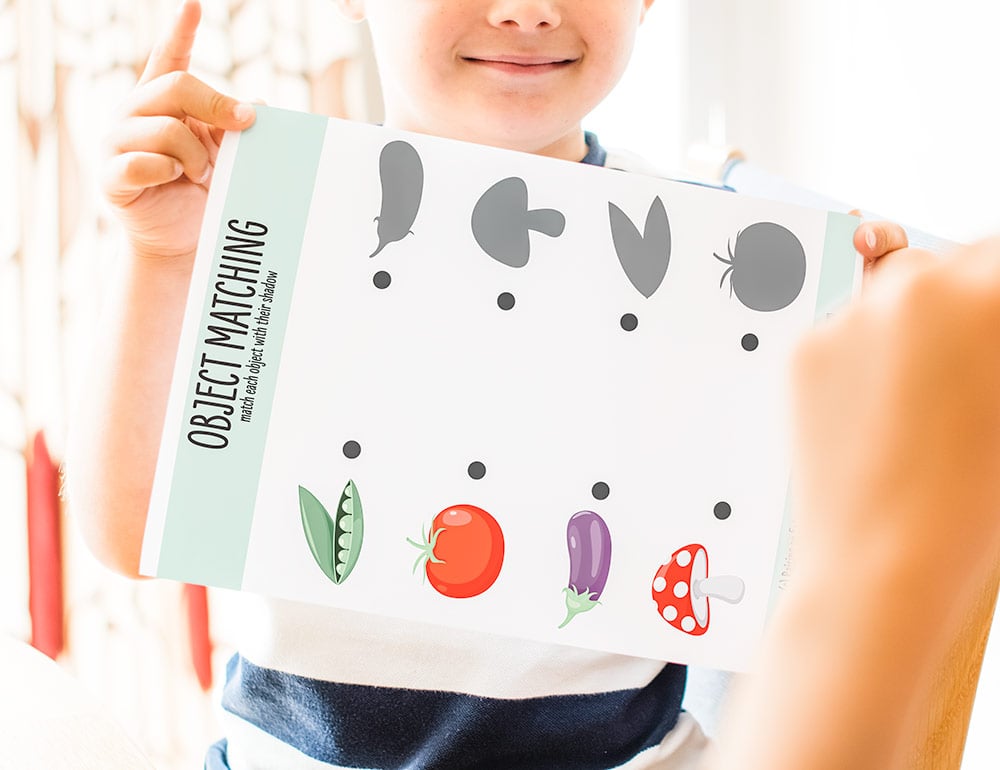Visual Discrimination: Shadow-Matching Activities
What’s inside this article: Signs your child is struggling with visual discrimination. Plus, information about how shadow-matching activities can improve visual discrimination, and free printables to help you get started.
These shadow-matching activities may seem incredibly simple, but they help develop visual discrimination skills and have many other benefits, too.
These shadow-matching printables are super to use and require almost no prep. Your child just draws a line from a colored illustration to the “shadow” of the same illustration, matching up a total of four images per sheet with their shadow.
Benefits of shadow matching activities:
Visual Discrimination
Visual discrimination is the ability to perceive the difference between objects or symbols. We perceive differences by differentiating colors, shapes, sizes, and orientations.
Young children often rely on colors when they’re identifying details in images and objects. Shadow matching forces children to analyze the shapes of objects because the shadow doesn’t contain any other details.
Being able to distinguish between different shapes is a necessary skill for learning to identify letters and numbers. The formation of each letter, or its shape, is the main distinguishing factor. Children can’t rely on colors or other details to learn their letters.
Visual Discrimination Challenges
Visual discrimination and perception issues occur when the brain is struggling to interpret and give meaning to visual sensory input. This can happen on its own or as part of a sensory processing disorder.
Learn how the visual system works here
The vestibular system, core/shoulder strength, and posture also affect the visual system. Working on these areas may also help improve visual processing.
Signs your child struggles with visual discrimination include:
- Struggles to copy words from a whiteboard or book
- Avoids or has difficulty with activities that require visual acuity. For example, puzzles, mazes, word searches, or spot-the-difference activities.
- Reverses letters when reading or writing
- Doesn’t notice the difference between similar letters and numbers. For example, confuses R and B, or b and d.
- Reading level below what is developmentally expected for their age
For children with visual discrimination challenges, extra practice doing activities that require visual acuity may help strengthen those skills over time. This is where the shadow-matching activities come in.
Children with strong visual discrimination skills are more likely to be successful in reading, spelling, and math.
Shadow-Matching Activities
Shadowing matching activities are a great way to encourage preschoolers to examine the different shapes of various objects before learning their letters – so that skill is already in place.
However, they’re also great for children of any age who struggle with visual discrimination to help improve that skill so they can be more successful in reading and writing.
How to use the activities
Depending on your child’s skill set, there are a few different ways you could use these matching activities.
There are 10 printable activity sheets in the shadow-matching bundle.

Other Visual Discrimination Activities
Anything that involves paying close attention to detail and visual acuity can help develop visual discrimination skills.

